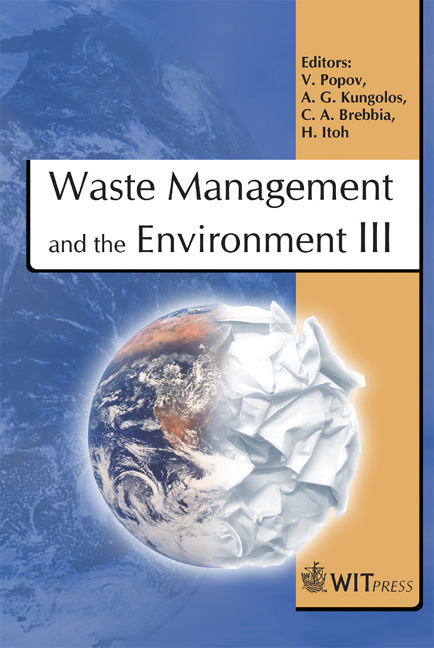Production Of Synthetic Zeolites From Lignite - Calcareous Greek Fly Ashes And Their Potential For Metals And Metalloids Retention
Price
Free (open access)
Transaction
Volume
92
Pages
8
Published
2006
Size
365 kb
Paper DOI
10.2495/WM060061
Copyright
WIT Press
Author(s)
A. Moutsatsou & V. Protonotarios
Abstract
The current state of the art focuses on the production of synthetic zeolites from lignite - calcareous fly ashes. The synthetic minerals are produced by the hydrothermal treatment of Greek fly ashes originating from Ptolemais and Megalopolis Power Plants in Greece. The products are examined in terms of their mineralogical composition, for the formation of known zeolites, morphology, thermal behavior, cation exchange capacity, pH, porosity and specific surface area. Zeolitic products, along with untreated fly ash, are investigated for their potential of retaining heavy metals from liquid wastes. The mechanisms of metal retention by zeolites in artificial solutions including lead, zinc, copper, arsenic and cadmium were examined. Solutions including the same pollutants, mobilized from a contaminated soil, utilizing selected solvents were produced. Results revealed the capability of zeolitic materials and fly ashes to retain metals in significant concentrations. Furthermore, a number of different retention mechanisms are developed, including ion exchange, surface adsorption and precipitation of metals. Keywords: fly ash, zeolites, metals, metalloids, retention mechanisms. 1 Introduction Fly Ash (FA) is a by product derived from the combustion of coal or lignite, mainly in electric power stations. More than 11.5 million tons of lignite fly ash is
Keywords
fly ash, zeolites, metals, metalloids, retention mechanisms.





